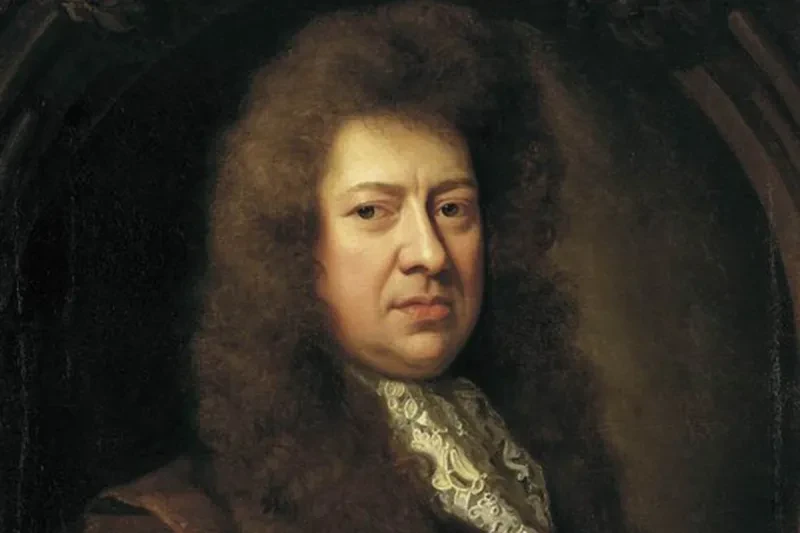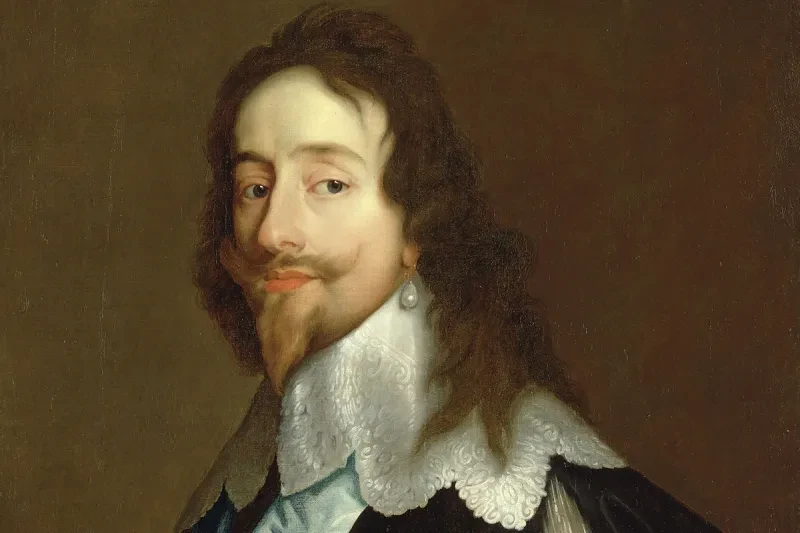
The Great Fire of London burned day and night for almost four days in 1666 until only a tiny fraction of the City remained. It came hot on the heels of the Great Plague and left the world's third largest city of the time a shadow of its former self. Was this God's judgment on wicked King Charles II?
Where did the Great Fire of London start?
The Great Fire of London began in the King’s Baker’s house on Pudding Lane in the City of London. Rather than making fresh loaves for the King, baker Thomas Farynor produced the dry and bland biscuits called ‘hard tack’ that filled the bellies of sailors in the Royal Navy.
In the early hours of Sunday 2 September 1666, the Farynor family woke to smoke coming from the bakery on the ground floor of their house. They escaped out of the upper floor window although their maid, too frightened to leave, perished. The long hot summer and the strong wind allowed the fire to spread rapidly.
The Lord Mayor Sir Thomas Bludworth was called. Afraid to order the pulling down of houses to make firebreaks, he ensured his place in the history books by exclaiming that the fire was so weak a ‘woman could piss it out’. He then returned to bed.
The Great Fire of London and Samuel Pepys
Samuel Pepys too was awoken to reports of a fire a few hundred yards away but thought it not worth bothering about and also returned to sleep. He woke a few hours later to reports that the fire had consumed hundreds of houses.
In the night, the wind blew embers to a nearby hay barn and to wharves filled with combustibles. The flames found easy passage from one wooden, thatched house to the next. Appalled by what he saw, Pepys made his way out of the City and down to the Palace of Whitehall to tell the King.
The King offered troops and commanded Pepys to tell the Lord Mayor to pull down houses to make fire breaks as Pepys advised. When Pepys managed to find the Lord Mayor, the poor fellow was close to collapse.
He had started having houses pulled down – or so he claimed – but the fire was still spreading and no one was listening to him. He declined the offer of troops and instead retired to home, the fire still raging.
The King and his brother James, Duke of York, surveyed the damage from a barge on the Thames. Charles took the decision to send in troops to create a firebreak.
Many residents of the City had now fled with their possessions and spent the night on the south side of the river watching the flames consume their homes and churches. Others headed north to camp out in Moorfields.
Read more about Samuel Pepys and the Great Fire of London
All hope is lost
As Monday 3 September came Londoners lost hope in the fire being stopped. Instead they turned their energy to rumour and retribution once their possessions had been secured. The Dutch, the French and anyone who appeared ‘foreign’ were attacked in the streets or thrown into jail (sometimes for their own protection from the mob).
Looting went on as the wealthy struggled through the streets with all their earthly possessions. Carts from the region made their way to London in order to cash in on surge pricing and make a few shillings. What wasn’t moved was often buried, Samuel Pepys famously buried a wheel of Parmesan cheese in his garden.
As night came, there was no darkness to be had in the roaring, spitting, cracking hell of that terrible evening. The fire managed not only to spread where the wind blew it, but even in the opposite direction and threatened to bear down on huge gunpowder stores by the Tower of London.
King Charles and his brother James to the rescue?
The King’s brother James was now in charge of efforts to fight the fire and he attempted to surround it with troops and gentleman firefighters but neither fire nor wind were easing and by the following morning it had leapt across the Fleet river and was heading directly for Whitehall and the King.
James was seen almost everywhere fighting the fire. An account of him and the King manning the pumps for hours up to their ankles in water did much to endear them to the people. Despite their efforts, the fire continued to spread and by the evening of Tuesday 4th September the unthinkable happened. St. Paul’s Cathedral was surrounded by fire by 9 p.m. The roof and the walls had collapsed, setting fire to the belongings piled inside for safekeeping. One of London’s greatest buildings was in ruins.
How did the Great Fire of London stop?
With fire in the west creeping towards the Palace of Whitehall, the Royal household packed their belongings and prepared to flee. Across London explosions could be heard as the buildings near the gunpowder stores at the Tower were blown up. On the brink of calamity to the east and west, just before midnight, the wind suddenly turned south and then died down.
By Wednesday afternoon the wind had eased off totally and attempts to confine the fire were successful. Nevertheless, the City of London was little more than a smouldering heap. 87 churches, 52 company halls and more than 13,000 houses had been destroyed. As many as 100,000 citizens were made homeless and 85% of the City had been destroyed.
How long did the Great Fire of London last?
All in all the fire raged across London from the 2 September to the 6 September, totalling 5 days.
Surprisingly, only six souls are known to have died but doubtlessly many deaths went unrecorded. Londoners who had lost their homes, and had no relatives or friends to help them, camped out on open spaces in and around London. Food supplies ran low, and hunger and disease began picking off the survivors.



